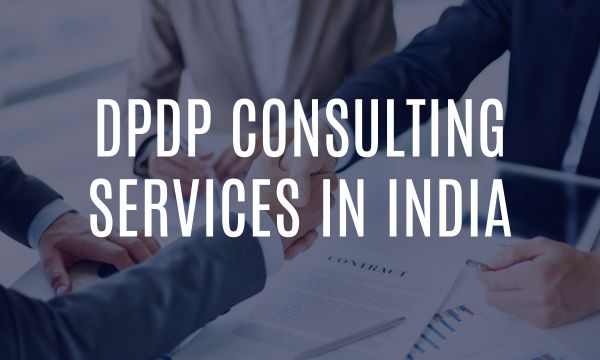
In the ever-evolving landscape of cybersecurity, SaaS organizations face a dual challenge: safeguarding sensitive data and systems while navigating budget constraints. As cyber threats become more sophisticated and regulatory demands intensify, finding a balance between robust security measures and financial feasibility is critical. Fortunately, several cost-effective strategies can enhance your cybersecurity posture without breaking the bank. As an expert in the field, Illume Intelligence will guide you through these methods, demonstrating how you can protect your SaaS business effectively and economically.
1. Strengthening Endpoint Protection: Your First Line of Defense
Endpoints are often the first entry points for cybercriminals. Securing these devices is paramount to preventing potential breaches. Implementing endpoint protection solutions, including antivirus, anti-malware, and anti-ransomware tools, is essential.
Expert Tip: Start with robust, cost-effective solutions like Microsoft Defender, Avast, or Bitdefender. These tools offer comprehensive protection without significant expenses. Ensure regular updates to address the latest threats, keeping your defences sharp and ready.
2. Harnessing Cloud Security Tools: Leverage Built-In Solutions
Many SaaS companies operate in cloud environments, making cloud security tools indispensable. Cloud platforms often provide built-in security features that can help protect your data and systems.
Expert Tip: Utilize native cloud security tools offered by providers such as AWS Security Hub, Azure Security Center, or Google Cloud Security Command Center. These tools are typically included in your cloud subscription or available at minimal additional cost, helping you enhance security without significant investment.
3. Adopting Zero Trust Architecture: Always Verify, Never Trust
Zero Trust Architecture (ZTA) operates on the principle of “never trust, always verify,” ensuring that every access request is authenticated, authorized, and encrypted. This model limits access based on identity and context, significantly reducing the risk of unauthorized access.
Expert Tip: Implement Zero Trust principles incrementally. Begin by applying these principles to critical assets and gradually extend them across your organization. Enhance Identity and Access Management (IAM) policies to support Zero Trust and bolster security.
4. Prioritizing Regular Security Training and Awareness
Human error remains a leading cause of security breaches. Regular security training and awareness programs are essential for educating employees about potential threats and secure practices.
Expert Tip: Take advantage of free training resources from organizations like the SANS Institute or Cybersecurity & Infrastructure Security Agency (CISA). Implement phishing simulations and security awareness programs to test and reinforce employee knowledge effectively.
5. Embracing Security Automation: Streamline and Protect
Security automation helps streamline operations, reduce manual effort, and enhance response times. Automated tools can monitor for threats, apply patches, and respond to incidents, making your security operations more efficient.
Expert Tip: Explore open-source security automation tools like Security Onion or Elastic Stack for log management and threat detection. Consider Security as a Service (SECaaS) providers that offer automated monitoring and incident response at a lower cost.
6. Implementing Multi-Factor Authentication (MFA): Adding an Extra Layer of Security
MFA requires users to provide multiple forms of authentication before accessing systems or data. This additional layer of security protects against unauthorized access, even if login credentials are compromised.
Expert Tip: Utilize free MFA solutions like Google Authenticator or Authy to enhance account security affordably. Integrate MFA with existing IAM solutions to streamline authentication processes and improve overall security.
7. Conducting Regular Security Assessments: Identify and Address Weaknesses
Regular security assessments, including vulnerability scans, risk assessments, and penetration testing, are crucial for identifying and addressing potential weaknesses in your security posture.
Expert Tip: Use free or low-cost vulnerability scanning tools like OWASP ZAP or OpenVAS. Engage with cybersecurity communities for guidance and support in conducting effective assessments and improving your security strategy.
8. Implementing Data Loss Prevention (DLP) Solutions: Safeguard Sensitive Information
DLP solutions monitor and control data transfers to prevent unauthorized access and ensure compliance with data protection regulations. Protecting sensitive data is critical for maintaining trust and meeting regulatory requirements.
Expert Tip: Leverage built-in DLP features provided by cloud platforms and endpoint protection tools. Consider open-source DLP tools like MyDLP or OpenDLP for additional data protection at a low cost.
Conclusion: Strategic Security Within Budget Constraints
For SaaS organizations, balancing robust cybersecurity measures with budget constraints requires a strategic approach. By implementing these cost-effective strategies—ranging from endpoint protection and cloud security tools to Zero Trust Architecture and security automation—you can enhance your cybersecurity posture without overspending.
Start by focusing on essential security measures, leverage available resources and tools, and continuously adapt your strategy to stay ahead of emerging threats. With these expert strategies, you can protect your SaaS business effectively, ensuring both security and financial health in an increasingly complex digital landscape.



